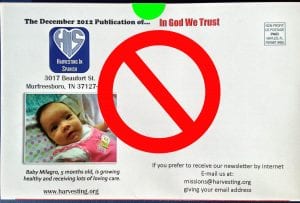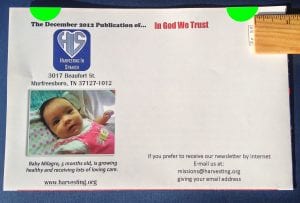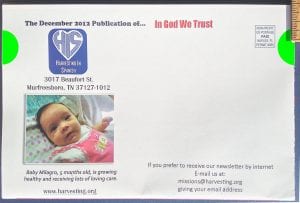If you send folded marketing mail that’s not in an envelope, you need to get up to speed on USPS tabbing regulations. Although these tabbing rules were originally introduced in January of 2013, they are still in effect today.
These USPS rules will require you to pay attention to a variety of factors including:
- the location of your tabs
- the size of your tabs
- the required number of tabs
- the thickness of the paper that you use
- the weight of your mailer
- the orientation of the fold
- inclusion of a staple
Why did the USPS introduce these rules? Raise your hand if you like more rules. Of course you don’t, but the USPS rationale for these stricter rules is to assure that your mail piece actually makes it through the mail without being destroyed.
Let’s face it, there’s not much point in investing money in direct mail marketing if there’s a good chance that your bulk mail won’t get delivered, so the rationale behind these changes makes sense.
Everyone sees USPS employees out delivering the mail, but what most people don’t realize is the complex and expensive sorting equipment that the USPS uses to route the mail to the correct location. It’s this USPS equipment that “eats” tabbed mail that is not prepared based on these new guidelines.
New rules apply to letter-sized pieces only: Before reading further, you should know that these new regulations will only apply to letter-sized bulk mail. We’re talking about mail that measure 6.125″ x 11″ or smaller when dropped into the mail-stream.
In our experience, the most common example of a self-mailer is the typical nonprofit newsletter, that gets folded down to 8.5” x 5.5” and mailed without an envelope.
Here are a few things that will disqualify your bulk mail right away:
- self-mailers that use only 1 tab
- using tabs at the bottomof your mailer
- using perforated tabs
- self-mailers with a gate-fold
- paper that is too thin
Letter size bulk mail should always be designed so that it folds at the bottom and tabs at the top.
How thick does my paper have to be? Standard copy paper won’t cut it anymore for self-mailers. The minimum paper thickness is either 28# bond or 70# text weight paper. Self-mailers printed on paper thinner than this will not be accepted by the USPS.
If you’re mailing a document that uses more than 1 sheet of paper (for instance a newsletter), then the thickness requirement only applies to the outermost sheet of paper.
How many tabs do I need? All letter-sized bulk mail pieces will require at least 2 tabs, and in some cases 3 tabs. Self-mailers, like the sample below with just one tab placed in the center will be rejected.
In addition, to being placed along the top of the mailer, tabs may instead be placed along the sides. In this scenario, the edge of the tabs must still be within 1″ of the corner. Again, see the samples below. While the top sample would be rejected by the USPS, the bottom sample would be acceptable.
Is your self-mailer stapled? Anything with a stitch or staple is considered a booklet. All letter-sized booklets will require 3 tabs. Said another way, anything that includes a staple must use 3 tabs.
The location of the third tab is important because the USPS equipment grabs your mail piece from the bottom righthand side, so they want the third tab to be on the bottom righthand side. As with the other tabs, the far edge of the tab needs to be within 1″ of the edge.
The photos below show two examples of approved tabbing for booklets/stapled mailers.
How many pages can I include in my self-mailer? If you have several pages, and opt not to staple, you are limited to how many pages you can use based on how you fold your self-mailer:
- unstapled, bi-folded mailers are limited to six 5″ x 11″ sheets (or three 11″ x 17″ sheets)
- unstapled, tri-folded mailers are limited to four 5″ x 11″ sheets (or two 11″ x 17″ sheets)
For letter-sized, stapled self-mailers, your mail piece can weigh a maximum of 3 ounces and must be less than 0.25″ thick. Remember, stitched mailers require a third tab placed 1″ from the bottom righthand corner.
What about tri-folded mailers? In terms of tabs, the same requirements apply for tri-folded, self-mailers, but the requirements are even more specific. The center panel must be used for printing the address, and the final fold must fold up in the back. If you’re having a hard time picturing this, just remember that self-mailers must tab from the top, and tri-folded mailers must have their address printed in the center panel.
How much does your mailer weigh? If your mail piece ways more than an ounce, you will be required to use tabs that measure at least 1.5″ across, most standard tabs, and all the tabs pictured in the photos included in this article measure 1″.
Other considerations: In lieu of tabs, glue dots may be used. The glue dots (aka captive glue) need to be a minimum of 3/8″ thick and need to follow the same guidelines as tabs in terms of distance from the edge, and number of required glue dots.
We confirmed with the USPS that another viable alternative is to use clear, transparent tabs instead of the more standard white opaque tabs.
Plan ahead to avoid issues with your next bulk mailing. If you’re unsure, it’s always a good idea to stop by your local Bulk Mail Unit with a sample. Ask for feedback on your sample piece, before you design and print all pieces.
What should I do if I already printed my mail piece and I’m stuck? If your mail piece is already printed and the paper is too thin, or it’s designed to fold incorrectly, you can always just mail it in an envelope.
If your mail piece is printed on a standard 8.5″ x 11″ sheet, it will fit nicely in a standard 6″ x 9″ envelope and still qualify to mail at the letter rate. In the worst-case scenario, if your addresses are already printed too, you may be able to use a 6″ x 9″ giant window envelope like the sample pictured below.
Of course, if you rely on your mailings to generate new business or collect donations from your supporters, and you want to avoid the complexities of mailing, we invite you to please contact us to see how we can help get your next mailer designed, printed, addressed and mailed.
In case it’s not apparent from this short article, we sweat the small stuff to make sure that our clients’ mailings are designed, printed and prepared in a manner that meets all USPS guidelines while saving the maximum amount on postage.
Of course, please also feel free to contact us with your questions or share your comments below.
Like what you’re reading? Have you signed up for our marketing tips enews yet or are you following our blog’s rss feed?








